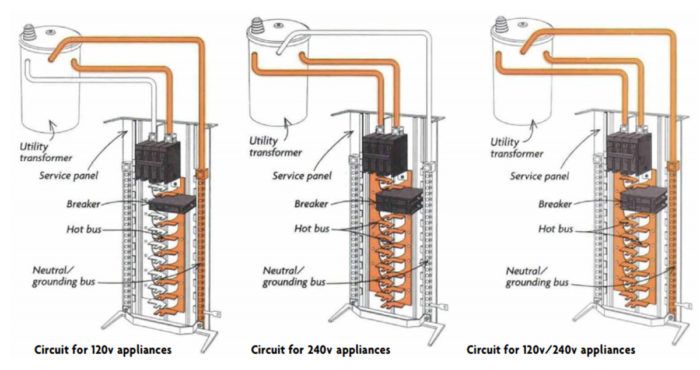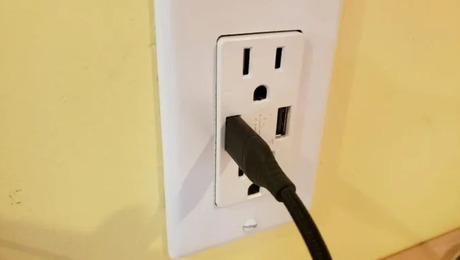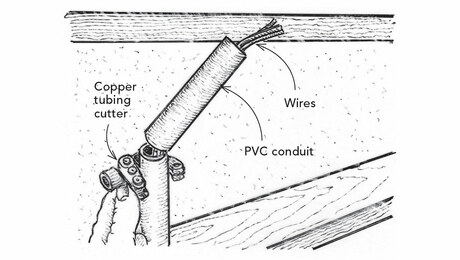Wiring Stoves and Dryers
Code now requires a four-slot receptacle to provide both 120 volts and 240 volts.

Synopsis: Stoves and dryers use both 120-volt and 240-volt current. Here, an electrical contractor explains why and shows how these appliances are properly equipped with four-prong plugs to meet updated electrical codes.
Whatever Benjamin Franklin might have thought about making the wild turkey America’s national emblem, he is rumored to have cooked one of these birds with electricity as early as 1749. Officially, though, the electric stove was invented in 1896, and by 1917, it had appeared in the Sears catalog. Wiring back then was quite simple: Two wires were all any appliance needed to work. Ground was something you built your outhouse on. Many decades and electric-code changes later, wiring is considerably more complicated.
Wiring an electric stove or a clothes dryer is not the same as hooking up other appliances. These devices actually use both 120v and 240v, and as a result, they are wired differently than appliances using either one or the other. Although there’s nothing new about that, there have been recent changes in the National Electric Code affecting dryers and stoves. Since 1996, electricians have been required to use four, not three, conductors for these two appliances. (Some states have not yet adopted this part of the code.) As a result, you may have a stove or dryer in your own house that is improperly wired.
Voltage at the service panel starts with windings in the transformer
You can’t truly understand how electric stoves and dryers are wired unless you understand where the power for them comes from. Your service panel is fed by a utility transformer, which has two basic windings: a primary and a secondary. The full-transmission voltage, normally around 7200v and up, is applied across the primary winding. Voltage on the secondary winding is directly proportional to the number of windings — fewer windings, lower voltage.
These step-down transformers, called cans, have three side terminals. Approximately 240v is available across the two end terminals. The center terminal, also called the center tap, goes right to the center of the secondary winding. (Transformers in some parts of the country may be a little different.) You get half the voltage, or 120v, between the center tap and either of the two outer terminals.
Why is this important? Because the voltage you get in a circuit depends on which two terminals are used. Circuits of 120v pull power from the center tap and one of the two end terminals. The black conductor can be traced back to one of the transformer’s two end terminals, and the white conductor goes to the center tap.
Heavy appliances and tools need 240v. They pull power from the can’s two end terminals. But electric stoves and dryers need both 120v and 240v. Current from the 240v terminals feeds the electrical-resistance elements. The 120v power is used for lights and controls. As a result, these appliances need three insulated wires plus a bare ground. Those connected to the transformer’s end terminals are black and red. The white wire goes back to the center tap at the transformer.
For more photos, drawings, and details, click the View PDF button below:
Old House Journal Recommended Products
Fine Homebuilding receives a commission for items purchased through links on this site, including Amazon Associates and other affiliate advertising programs.

Anchor Bolt Marker

Plate Level

Smart String Line


























